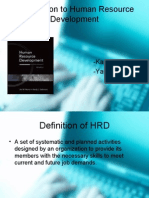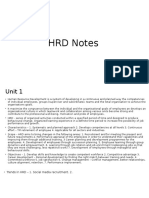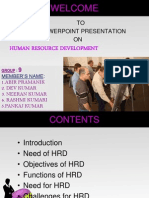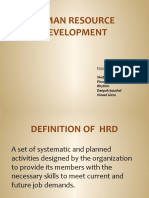0% found this document useful (0 votes)
12 views10 pagesIntroduction Aligning Values and Behavior
Human Resource Development (HRD) focuses on enhancing employee skills, knowledge, and competencies to promote organizational growth. Key components include training, career development, and performance management, which are essential for increasing productivity and job satisfaction. Future trends in HRD emphasize the use of AI, personalized learning, and the importance of soft skills in a hybrid work environment.
Uploaded by
Shreyansh SinghCopyright
© © All Rights Reserved
We take content rights seriously. If you suspect this is your content, claim it here.
Available Formats
Download as PPTX, PDF, TXT or read online on Scribd
0% found this document useful (0 votes)
12 views10 pagesIntroduction Aligning Values and Behavior
Human Resource Development (HRD) focuses on enhancing employee skills, knowledge, and competencies to promote organizational growth. Key components include training, career development, and performance management, which are essential for increasing productivity and job satisfaction. Future trends in HRD emphasize the use of AI, personalized learning, and the importance of soft skills in a hybrid work environment.
Uploaded by
Shreyansh SinghCopyright
© © All Rights Reserved
We take content rights seriously. If you suspect this is your content, claim it here.
Available Formats
Download as PPTX, PDF, TXT or read online on Scribd
/ 10




























































